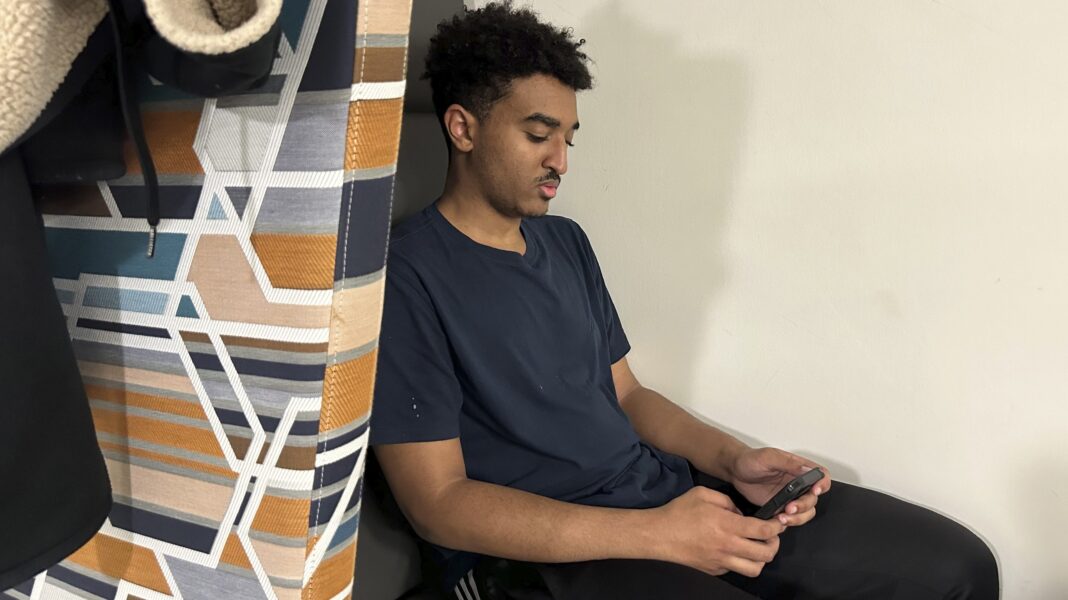American Teens and Their Relationship with Social Media: A Closer Look
Nearly half of American teenagers say they are online “constantly,” revealing a deepening connection with digital platforms despite rising concerns about the effects of social media and smartphones on mental health. A recent report by the Pew Research Center sheds light on these trends, painting a complex picture of how teenagers interact with technology.
Popular Platforms: The Ever-Present YouTube
In a landscape dominated by quick interactions and viral content, YouTube remains the heavyweight champion among platforms. Approximately 90% of teens reported watching videos on the site, though this figure has slightly dipped from 95% in 2022. Daily usage reflects this popularity, with almost three-quarters of teenagers visiting the platform every day. The vast array of content available—from educational videos to entertainment—helps YouTube hold its position as a staple of teenage life.
Shifting Interests: Declines in Other Apps
While YouTube flourishes, several other popular apps are experiencing slight downturns in usage among teens. TikTok, once a pandemic phenomenon, saw its usage drop from 67% to 63%. Snapchat, known for its ephemeral messaging, also experienced a decline, slipping from 59% to 55%. These drops could indicate a shift in behavior as pandemic restrictions are lifted, allowing teens more opportunities to engage in face-to-face socializing. However, one must be cautious in interpreting these trends; the declines, while notable, are not drastic enough to provoke significant alarm.
X and Threads: A New Era of Digital Interaction
Among the platforms assessed, X (formerly Twitter) experienced the most significant decline in teen users, dropping from 23% to just 17% since Elon Musk’s acquisition in 2022. This shift may signal a broader re-evaluation of the platform’s relevance to younger audiences, especially amid rising competition. Meanwhile, Meta’s Threads, introduced in 2023 as a direct competitor to X, saw limited traction, with only 6% of teens indicating usage.
In contrast, Reddit’s user base among teens remained stable at 14%, suggesting that niche communities and discussion forums still hold value for young users even as trends fluctuate.
Legislative Responses and Global Concerns
In response to growing concerns about the impact of social media on youth wellbeing, various countries are exploring new regulations. Australia, for instance, recently enacted a law prohibiting children under 16 from accessing social networks. The enforceability of such legislation remains questionable, raising concerns about potentially isolating vulnerable kids from essential social connections.
WhatsApp: An Unexpected Rise
Amidst these shifts, WhatsApp emerged as an exception, with its teenage user base growing from 17% to 23%. This increase suggests that messaging apps, which prioritize private conversations over public sharing, continue to resonate with teenagers. The platform may provide a more secure and private way for teens to maintain connections, contrasting sharply with the more public-facing nature of platforms like TikTok and X.
Frequency of Use: A Glimpse into Engagement Levels
The Pew Research Center also delved into how often teens engage with various platforms, revealing that a small yet significant number report near-constant usage. Approximately 15% of teens indicated they are online “almost constantly” on YouTube, while 16% reported the same for TikTok and 13% for Snapchat. This insight underscores the immersive nature of these platforms and the role they play in daily life.
Gender Differences in Digital Engagement
The survey highlighted notable gender differences in platform usage. Girls are more inclined to engage with TikTok almost constantly, while boys gravitate towards YouTube. However, when it comes to Snapchat, Instagram, and Facebook, no substantial gender differences were observed. This nuanced view provides a richer understanding of how different demographics interact with digital spaces.
Racial Disparities in Platform Engagement
Interestingly, the report also examined racial disparities in social media usage. About a quarter of Black and Hispanic teens reported using TikTok almost constantly, significantly higher than the 8% of white teenagers. Such differences reflect the varied cultural influences and social dynamics that shape teenagers’ online behaviors.
Survey Methodology
The insights presented in this article stem from a comprehensive survey conducted by the Pew Research Center, which included responses from 1,391 U.S. teens aged 13 to 17. The survey was carried out between September 18 and October 10, 2024, ensuring a timely snapshot of current trends.
By illuminating these patterns, the Pew Research Center’s report opens up important conversations about the evolving nature of social media and its implications for teenage life in America today.



